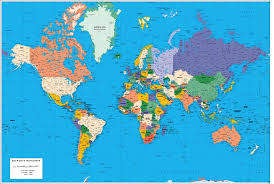
Brazil, Russia, China and India (BRIC) have traditionally been defined as emerging markets. However, a Timetric insight report: Emerging Markets – Identifying Sources of Growth in the Insurance Industry, identifies a new set of emerging markets – Mexico, Indonesia, Turkey, Vietnam and Kenya – where insurers should focus their attention.
The IIC report, which is available at Timetric’s Insurance Intelligence Center (IIC), says these markets exhibit similar characteristics such as rapid growth in GDP, household income and industrialization.
For example, healthcare insurance in Mexico, Kenya and Vietnam grew at CAGRs of 10.22%, 32.66% and 24.16% respectively, between 2010 and 2014 as a result of increased healthcare expenditure.
Changing lifestyle patterns, rising disposable incomes and the prevalence of numerous diseases will encourage more consumers to invest in private healthcare. Healthcare expenditure per capita in Mexico, Kenya and Vietnam increased by 10%, 29% and 34% respectively during 2010-2013.

How well do you really know your competitors?
Access the most comprehensive Company Profiles on the market, powered by GlobalData. Save hours of research. Gain competitive edge.

Thank you!
Your download email will arrive shortly
Not ready to buy yet? Download a free sample
We are confident about the unique quality of our Company Profiles. However, we want you to make the most beneficial decision for your business, so we offer a free sample that you can download by submitting the below form
By GlobalDataSource: Timetric
Insurance markets in this peer group are also going through significant regulatory changes. Timetric’s report says the industry is expected to consolidate between 2014 and 2018 due to high capital requirements as a result of introduction of a solvency regime comparable to Europe’s Solvency II.
For example, Mexico officially introduced the Insurance and Surety Institutions Law, based on Solvency II principles, from April 2015. However, quantitative aspects such as capital adequacy and valuation will come into force by mid-2016.
Meanwhile, Indonesia introduced an enhanced version of the risk-based capital framework with effect from January 1, 2013. This was followed by the Insurance Law 2014, enacted in October that year, which increased the minimum capital requirements for insurance entities, effective from December 31, 2014.
Mexico, Indonesia, Kenya and Vietnam also have significant low-income populations who cannot afford traditional insurance. Insurers have, as a result, introduced a number of microinsurance products, taking the opportunity to capitalize the potential of low-income consumers.
According to data from the World Bank and the Central Intelligence Agency (CIA), percentages of the population living in poverty in Mexico, Indonesia, Kenya and Vietnam were 52.3%, 12%, 43.4% and 17.2% respectively in 2012.
Insurers are already providing microinsurance products and services such as credit life, funeral, health and agricultural microinsurance, enabling low-income populations to manage risk. International insurers see microinsurance as a long-term growth strategy to access new and potentially high growth markets.
For example, Australian insurer IAG, in association with AAA Assurance in Vietnam, launched four microinsurance products in 2015, covering accident, surgery and hospital cash, motorcycle loss and theft, and home fire protection.
PT Prudential Life Assurance (Prudential Indonesia) launched the PRUaman microinsurance product in Indonesia in April 2013. It provides low-income households with affordable, easy-to-access financial protection through micro-finance institutions and rural banks.

Although there are plenty of opportunities in the insurance markets of Mexico, Indonesia, Turkey, Vietnam and Kenya, it’s important to acknowledges there are challenges too.
The business environment in a particular economy can be one such concern for foreign insurers entering a market. In terms of ease of doing business, Vietnam ranks 78th and Kenya ranks 136th, according to the World Bank’s 2015 Doing Business report.
As emerging economies, the IIC report also points out that insurance industries in Indonesia, Turkey, Kenya and Vietnam are still developing. Skilled personnel and underwriting specialists are scarce, especially in Kenya and Vietnam, which may discourage large investment by foreign insurers.
AXA emerging markets initiative
Insurers’ focus on emerging markets comes as AXA has launched a global initiative that targets lower-income populations in emerging markets – ‘the middle class of tomorrow’ – and contributes to financial inclusion.
The AXA initiative involves accelerating the development of its emerging customer insurance offer across high-growth markets.
AXA has also increased to 46% its stake in MicroEnsure, a micro-insurance specialist serving over 20m emerging customers across Asia and Africa.
According to AXA, only 17% of global insurance premiums come from emerging markets, even though their contribution to global GDP is 40%.
The insurer said this discrepancy, in great part driven by the underinsurance of lower-income populations, highlights the potential growth impact of financial inclusion.
It said the causes of this global protection gap range from a very local cultural understanding of risk and a lack of accessible and affordable solutions, to both limiting and fragmented regulatory frameworks.
Emerging middle class
By targeting this underserved but emerging middle class, the micro-insurance industry has experienced fast-paced growth in recent years. AXA said it is estimated to represent 3 to 4bn people in need for protection, or a market of US$ 30-50bn in annual insurance premium revenue.
Building upon its existing micro-insurance schemes developed locally across Asia, Africa and Latin America that currently protect over 3m emerging customers, AXA has decided to allocate dedicated resources and expertise to address this growth segment, and develop offerings encompassing life and savings, health, property and casualty insurance as well as assistance.
AXA said this business is expected to develop innovative solutions, be it in terms of partnerships, products and services, distribution channels or operating models, in order to better address the needs of this client segment.
Garance Wattez-Richard is appointed to lead this emerging customer segment at group level. Wattez-Richard was previously the group’s head of media relations and reputation, and leader of AXA’s women and insurance initiative.
She will report to Thomas Buberl, member of AXA group’s management committee, CEO of AXA Germany, and CEO of the global business lines for the health and life and savings businesses.
‘Unreached by insurance schemes’
Commenting on the initiative, Buberl said: "Lower income populations in emerging countries remain unreached by mainstream commercial and social insurance schemes, all the while being the most vulnerable to shocks. There is a clear opportunity to accompany them in their journey to becoming the middle class of tomorrow.
"The specific protection needs and characteristics of this emerging middle class will force us to reinvent the way we conduct our business, opening up a space in which to leverage digital technologies, pilot innovative products and services, as well as scale up our partnership-building abilities to better reach and serve our clients."







